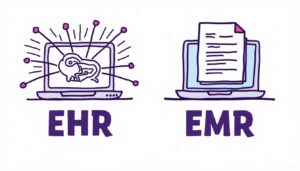Innovations in Patient Communication: Beyond SMS and Email
10 Jun 2025 By: Maria Rush
Updated
Ever noticed how different talking to your doctor has become lately? Sure, text messages and emails were fine for a long time. But now there’s a whole bunch of cool, new tools shaking things up. Let’s take a closer look at how healthcare providers are improving patient communication with their patients.
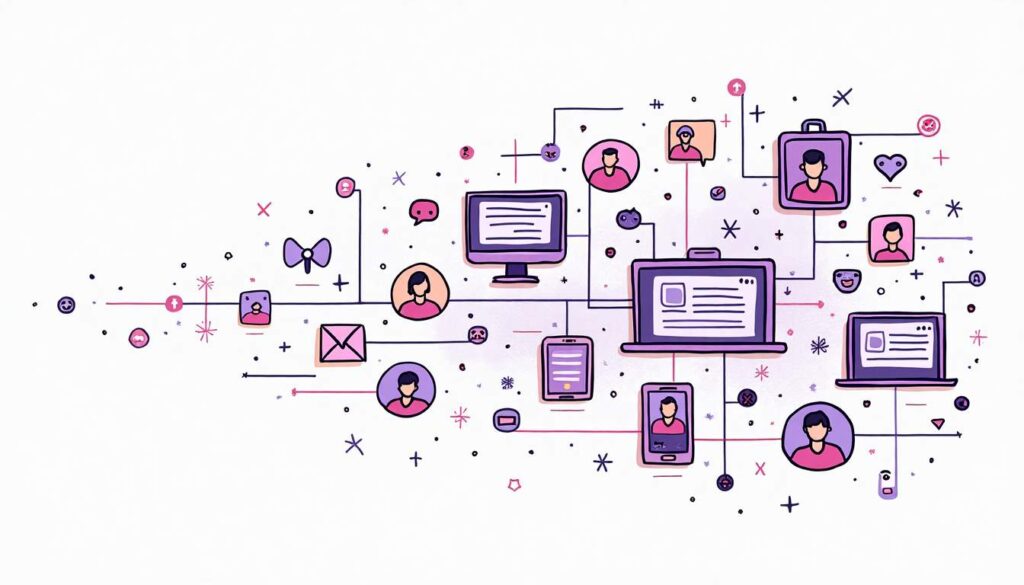
The Rise of Telehealth Communication
Telehealth is a real upgrade. Instead of driving to a clinic and sitting around in a waiting room, you can just hop on a video call from your sofa. Doctors get to actually see you, making conversations more personal and effective. This is especially helpful for people living far away or those who find it tough to get around. Easier for you, better for your doctor and a huge win for patient communication.
Video Consultations: A New Norm
Let’s be real, no one misses the waiting room. Video consultations have become the go-to for a reason. You can talk to your doctor face-to-face, get checked out visually, and handle it all without changing out of your pajama pants.
It’s not just about comfort either. For people in rural areas or anyone who just doesn’t have time to drive across town. This setup is a lifesaver. No commute. No traffic. Just good healthcare, from wherever you are. That’s not just convenient it’s better access to care, plain and simple.
Asynchronous Communication Tools
Then there’s asynchronous communication basically, messaging your doctor like you’d text a friend. No pressure to respond right away. You send a message when you’ve had time to think it through, and they get back when they can. Everyone wins.
These platforms let you send files, schedule appointments, even upload photos of that weird rash (you know the one). It’s a full-on patient communication hub that works around your life, not the other way around.
Mobile Health Applications
Think about having your doctor’s office right in your pocket. That’s what mobile health apps do. You can message your provider, track important health stats, and get instant feedback. This makes you way more likely to stick to your treatment plan and avoid complications. It’s a major improvement in everyday patient communication.
Patient Portals: A Gateway to Information
Imagine having a single spot online with all your medical info. Your records, appointment schedules, and effective communication with your doctors. That’s exactly what patient portals offer for effective communication with patients. It keeps you informed, involved, and proactive about your own health. And proactive patients typically see better results in their patient-centered care. It’s all part of creating a better patient communication experience.
Health Monitoring and Feedback
Ever wish your health could be monitored continuously, without effort? Apps can now do exactly that. Checking things like your vital signs or medication usage. Doctors get instant alerts if something looks off, letting them jump in quickly to help. Plus, app reminders keep you on track with your health goals. These tools contribute to a new level of patient communication that’s proactive and data-driven.
Continue reading for more insights:
Healthcare Data Collection
HIPAA Compliance for Outsourced Healthcare Services
Healthcare Business Process Outsourcing (BPO)
Artificial Intelligence in Patient Communication
Artificial Intelligence (AI) is seriously making patient communication smoother and smarter. New tools includes AI Healthcare Chatbot Support and AI Medical Chatbot Support. Patients are getting real-time answers and help without needing to wait on hold, enhancing the communication with their care providers. These AI-driven healthcare chat support solutions are improving the way patients engage with their providers.
Chatbots: 24/7 Support
Imagine having a helpful assistant available 24/7. AI-powered healthcare chatbots do exactly that. They answer your questions, help schedule appointments, and remind you about medications whenever you need. A Virtual AI Health Chat Assistant makes things easier by providing consistent support and quick solutions. These tools are redefining what patient communication looks like in a digital-first world.
Personalized Communication Strategies
AI-driven healthcare chat support isn’t just efficient; it’s personal. These tools use your medical history and preferences to send you messages that feel like they’re crafted just for you. This level of customization builds trust and connection. That’s where an AI Medical Chatbot Support platform really shines. And why it’s becoming an essential part of modern patient communication.
Social Media as a Communication Tool
Believe it or not, social media isn’t just for selfies anymore. Healthcare providers now use platforms like Facebook and Instagram to reach out directly to patients with important health information and updates. It’s another way to improve accessibility and make patient communication more dynamic.
Building Community and Support
Social media platforms are great for building patient communities, providing support and useful information to those facing similar health challenges.
Real-Time Updates and Engagement
Providers also use these platforms to quickly share important updates, keeping everyone informed and connected. It’s fast, responsive, and effective patient communication.
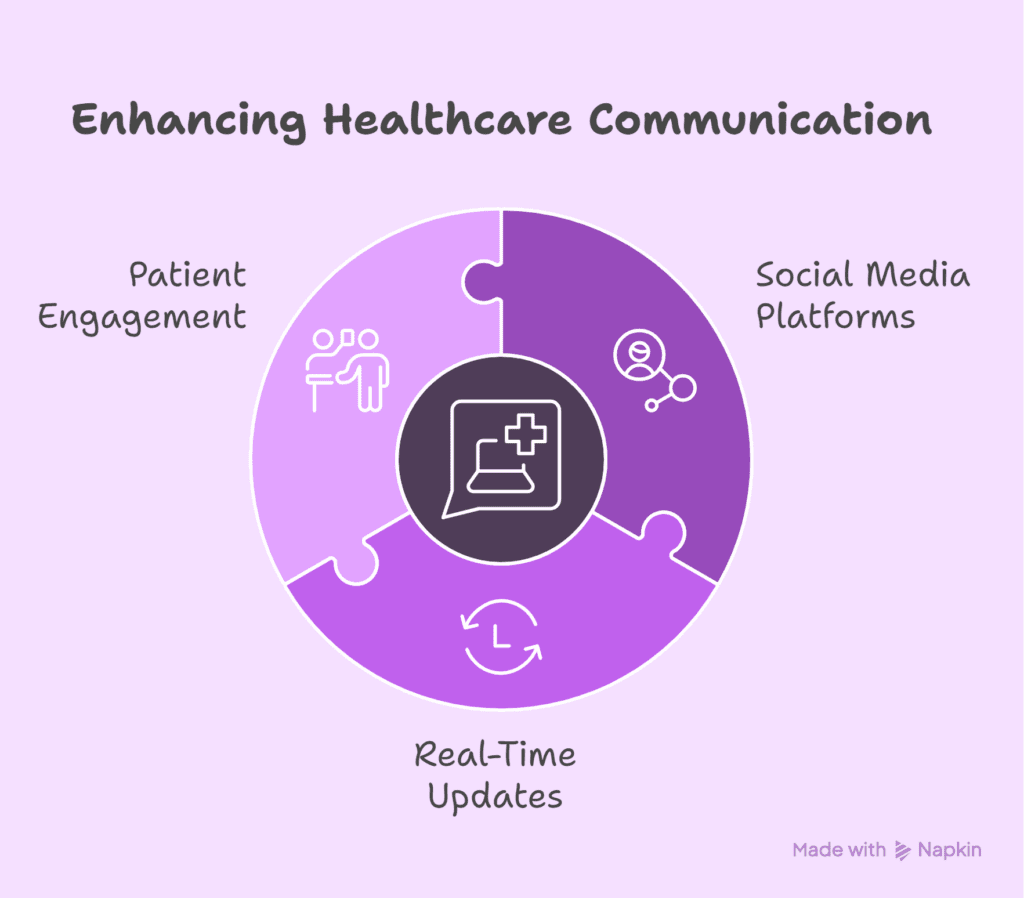
Trending Now
Dr. Sham Persaud gets it. In an interview with Healthgrades, he shared something we all probably know deep down: good communication between doctors and patients isn’t just a “nice-to-have.” It’s everything.
He talked about being a young athlete making serious medical decisions and how what really helped was when doctors actually took the time to talk with him, not at him. Empathy, honesty, and just being real? That’s what made the difference.
Dr. Persaud pointed out that when doctors slow down, have real conversations, and treat patients especially younger ones, like partners in the process, trust goes up, outcomes get better, and people feel seen.
It’s not about rushing through a checklist. It’s about connecting. Listening. Letting the patient be part of the plan. That’s the kind of care that sticks with you.
Interactive Patient Education Tools
Who says health education has to be dull? Interactive tools make patient education exciting and effective.
Gamification of Health Education
Gamification turns health education into something enjoyable. This approach helps patients really grasp tricky topics like chronic disease management or lifestyle changes. Fun makes learning stick, and sticking means better health. And let’s be honest, better education leads to better patient communication overall.
Virtual Reality Experiences
Virtual reality (VR) lets patients visualize medical procedures clearly, helping reduce anxiety and boosting confidence. Seeing things visually makes medical advice easier to follow. It’s another innovative way to make patient communication clearer and more impactful.
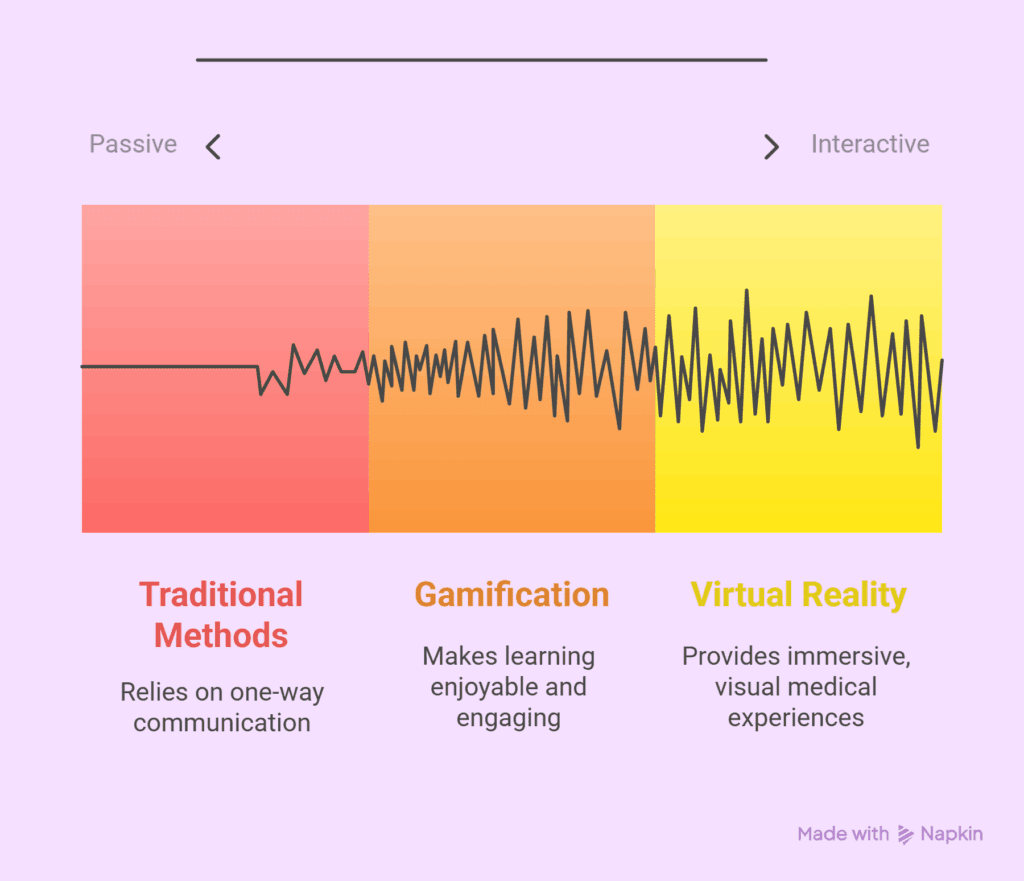
The Importance of Data Security and Privacy
With all these cool tech tools, data security is super important. Providers must prioritize strong security measures, like encryption and regular audits. Educating patients clearly about data use and privacy builds trust, balancing innovation with responsibility. Strong privacy measures also enhance confidence in digital patient communication.
Implementing Robust Security Measures
If you’re using tech in healthcare, and let’s face it, you are then locking down your patient data isn’t optional. You’ve got to protect it like it’s your grandma’s secret recipe. That means encryption, secure logins, regular audits… the works.
HIPAA doesn’t mess around, and neither should you. Patients need to know their info is safe. If they’re going to message you, send documents, or book appointments online, they need to trust that nothing’s getting leaked. No one wants their lab results showing up in a group chat, right?
Also talk to your patients about this stuff. Let them know what’s being collected and how it’s protected. Transparency builds trust. And trust is gold in healthcare.
Balancing Innovation and Privacy
Yes, innovation is great. We love smart tech, virtual check-ins, AI-powered chats. But here’s the thing: just because you can collect all that data doesn’t mean you should do it without asking.
There’s a balance here. Patients want personalized care, but they also want to feel like their info isn’t being sold to the highest bidder.
Set clear policies. Get consent. Keep it clean and honest. When people know what’s going on and feel respected, they’re way more likely to actually use these new tools. That’s the real win. Better tech, and patients who trust it.
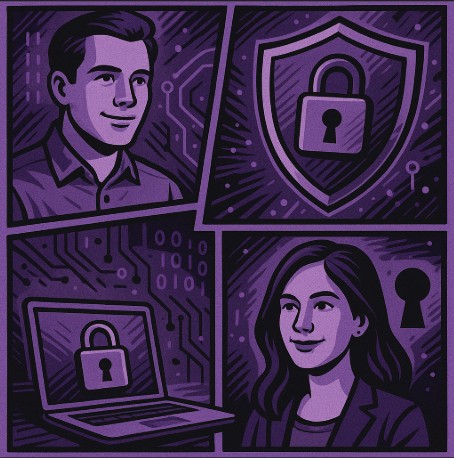
Future Trends in Patient Communication
Wearable tech and personalized medicine are set to transform healthcare communication. Wearables provide real-time health updates, allowing for proactive healthcare and better patient outcomes.
Integration of Wearable Technology
Remember when watches just told time? Now they tell you your heart rate, how many steps you’ve taken, and whether you’ve been sitting too long (thanks for the guilt trip, smartwatch).
Wearable tech like fitness trackers and smartwatches is becoming a big part of healthcare. Patients are already using them. They’re tracking sleep, activity, blood pressure. You name it. And the best part? All that info can be shared with healthcare providers in real time.
That means your doctor doesn’t have to guess how your week’s been. They’ve got the data. So instead of waiting for a checkup every few months, providers can offer advice right when it matters. It’s like having a mini health team on your wrist. And yes, it leads to better outcomes and happier, healthier patients.
Expansion of Personalized Medicine
Everyone’s different. So why should treatment be the same for everyone?
That’s where personalized medicine comes in. It’s about creating treatment plans based on you. Your genetics, lifestyle, habits. But here’s the kicker: if you’re tailoring the treatment, your communication better be just as customized.
This is where AI and smart tools come in clutch. With data analytics and AI-driven systems, providers can send you the right info at the right time. Like a heads-up that your new prescription might not mix well with something you’re already taking. It’s precise, timely, and actually useful.
The result? Better care, fewer surprises, and communication that finally feels like it was made for you (because it was).
Conclusion
Healthcare communication is evolving quickly beyond just SMS and email. With innovations like telehealth, mobile apps, social media, and AI-Powered Healthcare Chatbots, patient-provider connections are stronger than ever. By responsibly embracing these technologies while keeping patient privacy top of mind. Healthcare providers can offer smarter, more efficient care. This is the future of healthcare: intelligent, responsive, and truly patient-focused. With AI-driven healthcare chat support and improved patient communication leading the way.
Ready to upgrade how you connect with your patients? HelpSquad Health makes it easy. Our 24/7 virtual support agents specialize in healthcare communication. Whether it’s managing live chat, handling patient inquiries, or integrating with your AI tools to keep things running smoothly. Starting at just $8.50 an hour, you get HIPAA-compliant, bilingual support that feels anything but robotic. Experience patient communication that’s personal, professional, and always on. Start your trial today and see what HelpSquad can do for your healthcare practice.

